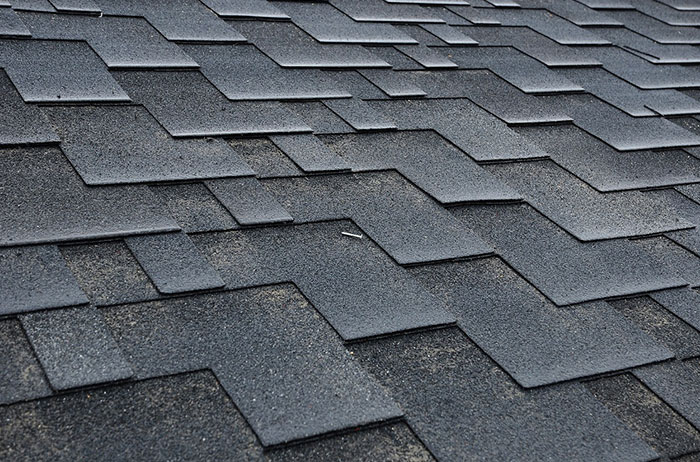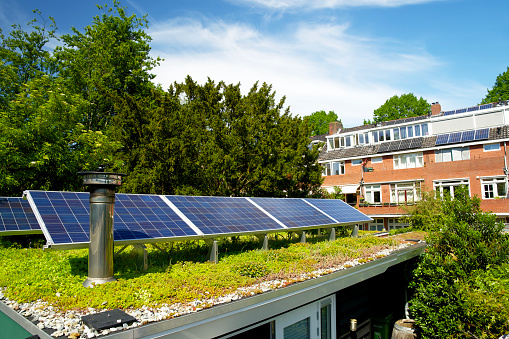The world of green roofs can be astutely described as a point where innovation meets sustainability. In recent years, green roofs have been found to be a great solution for dealing with the environmental concerns of modern city living. One major solution they offer is their ability to reduce the urban heat island effect. In addition, green roofs are also good for enhancing home biodiversity.
In this article, we will discuss the various types of green roofs and the benefits they offer. We will also consider important tips for installing green roofs. Let’s proceed.
Benefits of Green Roofs
Green roofs offer many benefits ranging from ecologically beneficial to environmental and technical benefits. Below, we discuss some of these benefits.
-
Reduction of urban heat island effect
Green roofs don’t reflect as much solar radiation as regular roofs. They do not also absorb heat as much as regular roofs. Due to this characteristic, green roofs naturally help to reduce the urban heat island effect. Consequently, the presence of green roofs in urban landscapes helps to improve air quality. Generally, urban landscapes are known to suffer from the urban heat island effect. However, the presence of green roofs in such areas helps to combat the issue sufficiently.
-
Increased lifespan of roofs
When roofs are installed on a building, they become subject to attacks from various elements. They must always cope with weather elements, biological factors, pests, etc.
Eventually, most roofs only last as long as they ought to. Green roofs, on the other hand, are more sustainable. These types of roofs are known to offer at least double or triple the average life expectancy you would get from regular roofs. This is because green roofs usually have a greenery barrier that helps protect their waterproof membrane from weather elements.
-
Reduced carbon footprint by lowering building running costs
Green roofs help to improve the thermal insulation of a building. This goes a long in providing a more balanced temperature within the home. Consequently, you won’t need to spend too much on heating costs in the winter or cooling costs during the summer period.
-
Enhanced stormwater management and water quality
Green roofs can help reduce and slow down stormwater runoff in urban landscapes. In addition to that, they can also help filter pollutants in water collected from rainfall.
Another instance where green roofs contribute to improving water quality is through the process of retaining storm-related precipitation during summer. On the other hand, they usually have lower retention during the winter months (< 20%).
This process is proven to be beneficial for stormwater management. However, you should note that the potential for a green roof to help with stormwater management effectively depends on the season and rainfall patterns.
-
Aids biodiversity by encouraging a wider spread of species in urban areas
Most cities and urban landscapes need more room for the sufficient existence of birds, insects, and other creatures. The presence of green roofs in urban areas helps to solve this problem.
It helps to promote biodiversity by attracting wildlife. In fact, one can decide to add extra features like bird baths and beehives. These kinds of features can help boost the roof’s ecological impact.
Types of Green Roofs
-
Extensive Green Roofs
Extensive green roofs are usually built with a thin layer of soil. In other cases, they are usually built with shallow-root plants such as sedum, mosses, and grasses. Due to this factor, extensive green roofs are not usually more than 5 inches deep.
In addition, they usually contain a tray system for limiting the excessive growth of their grasses. This tray doesn’t only limit excess plant growth; it also helps to protect the roof membrane.
It does this by interlocking the entire system to make the roof more compact and, thus, resistant to wind damage and other environmental factors.
Characteristics
- Extensive green roofs are lightweight. They typically weigh between 10 to 25 pounds per square foot when dry.
- They require very little maintenance.
- An extensive green roof will barely need water if the right plant is chosen for the installation. Therefore, you won’t need to install an irrigation system.
- You don’t need to apply fertilizers on green roofs, except in cases where you need to control weeds.
- They are cheap to install and maintain.
-
Semi-Intensive Green Roofs
Semi-intensive roofs are majorly installed for aesthetic purposes. Hence, you will mostly see this green roof in highly visible areas.
The materials used in building semi-intensive roofs include small shrubs, mosses, forbs, and grasses. In addition to those materials, some semi-intensive green roofs also come built with semi-intensive plantings like herbs, flowering plants, and tall grasses. As a result, semi-intensive green roofs often weigh more than others and are more expensive.
Characteristics
- They often need adequate maintenance because of their vegetation type and substrates.
- Semi-intensive systems are quite heavy. They usually weigh between 25 to 40 pounds per square foot when they are dry.
- They are constructed in layers, but some may also be constructed using the tray system.
3. Intensive Green Roofs
Intensive green roofs usually make use of deep soils. This makes it possible for them to accommodate different plant materials, such as large shrubs and trees.
As a result, this type of green roof usually has a big impact on a building’s structural design. For instance, intensive green roof systems usually give room for creative structural designs like rooftop gardens or parks.
Characteristics
- When dry, intensive green roofs usually weigh between 35 to 100 pounds per square foot.
- It requires heavy maintenance.
- Intensive green roofs mostly require irrigation systems.
Installation Tips for Green Roofs
- Consider the available green roof options and choose the one that best suits your building’s structure and location.
- Ensure to install a waterproof membrane when installing a green roof.
- You should ensure to install foams alongside the green roof.
- Make arrangements for drainage mats.
- Ensure to employ the services of roofing experts like Shoreline Roofing.
Conclusion
By researching the many benefits of green roofs, exploring the different options, and gaining useful installation tips, you will likely better understand how this sustainable feature can help your home or business.
If you want to learn more or get started with your roofing project, contact us at Shoreline Roofing today. Our team of experts can provide personalized advice and quality service that will give you peace of mind. We also specialize in professional roof installation, maintenance, replacement, inspection, and repair. Don’t wait any longer to enhance your property! Contact us at (250) 413-7967, and let’s discuss what type of green roof would best fit you.



